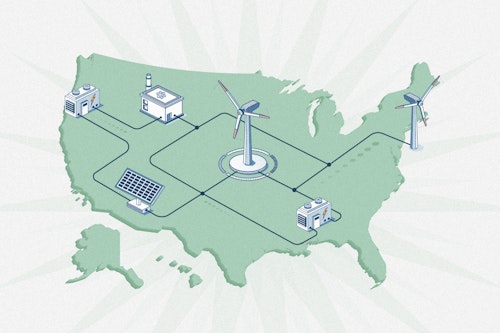Tracing Transmission Trends: A Flowchart of Key Federal Actions

Aging infrastructure, surging demand, and an evolving energy mix are stress-testing our existing transmission network. Thankfully, reform is on the horizon. Over the last two years, dozens of efforts have sprung up across the federal government: from both Chambers of Congress to the White House, the Federal Energy Regulatory Commission (FERC) to the Department of Energy (DOE).
Significant funding, influential reports, new programs, and an assortment of regulatory actions aim to lay the groundwork for an efficient and expanded transmission system of the future.
At their core, the federal actions highlighted in this graphic advance at least one of three priorities: modifying existing electric infrastructure, building new transmission lines, and/or improving the interconnection process. And with over 2.6 TW of energy locked up in a cumbersome interconnection queue, new and more efficient existing transmission lines are needed now more than ever.
The flowchart below highlights how significant federal initiatives interact with each other to advance solutions to those challenges. A few key findings emerge when these actions are visualized via a Sankey diagram.
Firstly, while each of the three end-nodes on the far right of the graphic deserves equal attention, federal initiatives have largely focused on building new greenfield transmission. Adopting a “both/and” approach to transmission development (improving existing + building new) is crucial to ensuring the grid evolves to meet the challenges of a changing energy landscape.
Secondly, while the intent to act is clear, success will ultimately depend on implementation. Currently, none of the legislation introduced by Congress (and tracked below) has become law, and many DOE programs are still in their early days. Similarly, FERC’s critical new long-term transmission planning and cost allocation rule (Order. No. 1920) won’t come into effect until next year. This graphic has been created to illustrate our progress and to serve as a benchmark for ongoing advocacy and implementation efforts.
As Congress, FERC, and the Biden Admin look ahead to what’s next, a holistic approach to grid development is needed to better balance the three competing challenges outlined above. That being said, the federal government's significant efforts toward grid modernization in recent years is an encouraging trend that we’re excited to see continue into the future.
To learn more about each one of these federal actions (dates, descriptions, and departments) click here.
Subscribe
Get updates whenever new content is added. We'll never share your email with anyone.


